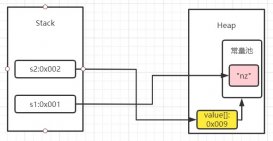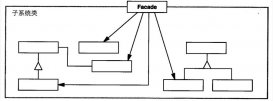前言
mybatis 是一款优秀的持久层框架,它支持定制化 sql、存储过程以及高级映射。mybatis 避免了几乎所有的 jdbc 代码和手动设置参数以及获取结果集。mybatis 可以使用简单的 xml 或注解来配置和映射原生信息,将接口和 java 的 pojos(plain old java objects,普通的 java对象)映射成数据库中的记录。
用来循环容器的标签foreach,查看例子
foreach元素的属性主要有item,index,collection,open,separator,close。
● item:集合中元素迭代时的别名,
● index:集合中元素迭代时的索引
● open:常用语where语句中,表示以什么开始,比如以'('开始
● separator:表示在每次进行迭代时的分隔符,
● close 常用语where语句中,表示以什么结束,
在使用foreach的时候最关键的也是最容易出错的就是collection属性,该属性是必须指定的,但是在不同情况下,该属性的值是不一样的,主要有一下3种情况:
● 如果传入的是单参数且参数类型是一个list的时候,collection属性值为list .
● 如果传入的是单参数且参数类型是一个array数组的时候,collection的属性值为array .
● 如果传入的参数是多个的时候,我们就需要把它们封装成一个map了,当然单参数也可以封装成map,实际上如果你在传入参数的时候,在mybatis里面也是会把它封装成一个map的,map的key就是参数名,所以这个时候collection属性值就是传入的list或array对象在自己封装的map里面的key.
针对最后一条,我们来看一下官方说法:
注意 你可以将一个 list 实例或者数组作为参数对象传给 mybatis,当你这么做的时候,mybatis 会自动将它包装在一个 map 中并以名称为键。list 实例将会以“list”作为键,而数组实例的键将是“array”。
所以,不管是多参数还是单参数的list,array类型,都可以封装为map进行传递。如果传递的是一个list,则mybatis会封装为一个list为key,list值为object的map,如果是array,则封装成一个array为key,array的值为object的map,如果自己封装呢,则colloection里放的是自己封装的map里的key值
|
1
2
3
4
5
6
7
8
9
10
11
12
|
//mapper中我们要为这个方法传递的是一个容器,将容器中的元素一个一个的//拼接到xml的方法中就要使用这个foreach这个标签了public list<entity> querybyid(list<string> userids);//对应的xml中如下<select id="querybyid" resultmap="basereslutmap" >select * from entitywhere id in<foreach collection="userids" item="userid" index="index" open="(" separator="," close=")">#{userid}</foreach></select> |
concat模糊查询
|
1
2
3
4
5
6
7
8
9
10
|
//比如说我们想要进行条件查询,但是几个条件不是每次都要使用,那么我们就可以//通过判断是否拼接到sql中<select id="querybyid" resultmap="bascresultmap" parametertype="entity">select * from entity<where><if test="name!=null">name like concat('%',concat(#{name},'%'))</if></where></select> |
choose (when, otherwise)标签
choose标签是按顺序判断其内部when标签中的test条件出否成立,如果有一个成立,则 choose 结束。当 choose 中所有 when 的条件都不满则时,则执行 otherwise 中的sql。类似于java 的 switch 语句,choose 为 switch,when 为 case,otherwise 则为 default。
例如下面例子,同样把所有可以限制的条件都写上,方面使用。choose会从上到下选择一个when标签的test为true的sql执行。安全考虑,我们使用where将choose包起来,放置关键字多于错误。
|
1
2
3
4
5
6
7
8
9
10
11
12
13
14
15
16
17
18
19
20
|
<!-- choose(判断参数) - 按顺序将实体类 user 第一个不为空的属性作为:where条件 --><select id="getuserlist_choose" resultmap="resultmap_user" parametertype="com.yiibai.pojo.user">select *from user u<where><choose><when test="username !=null ">u.username like concat(concat('%', #{username, jdbctype=varchar}),'%')</when ><when test="sex != null and sex != '' ">and u.sex = #{sex, jdbctype=integer}</when ><when test="birthday != null ">and u.birthday = #{birthday, jdbctype=date}</when ><otherwise></otherwise></choose></where></select> |
selectkey 标签
在insert语句中,在oracle经常使用序列、在mysql中使用函数来自动生成插入表的主键,而且需要方法能返回这个生成主键。使用mybatis的selectkey标签可以实现这个效果。
下面例子,使用mysql数据库自定义函数nextval('student'),用来生成一个key,并把他设置到传入的实体类中的studentid属性上。所以在执行完此方法后,边可以通过这个实体类获取生成的key。
|
1
2
3
4
5
6
7
8
9
10
11
12
13
14
15
16
17
18
19
20
|
<!-- 插入学生 自动主键--><insert id="createstudentautokey" parametertype="liming.student.manager.data.model.studententity" keyproperty="studentid"><selectkey keyproperty="studentid" resulttype="string" order="before">select nextval('student')</selectkey>insert into student_tbl(student_id,student_name,student_sex,student_birthday,student_photo,class_id,place_id)values (#{studentid},#{studentname},#{studentsex},#{studentbirthday},#{studentphoto, javatype=byte[], jdbctype=blob, typehandler=org.apache.ibatis.type.blobtypehandler},#{classid},#{placeid})</insert> |
调用接口方法,和获取自动生成key
|
1
2
3
4
5
6
7
8
|
studententity entity = new studententity();entity.setstudentname("黎明你好");entity.setstudentsex(1);entity.setstudentbirthday(dateutil.parse("1985-05-28"));entity.setclassid("20000001");entity.setplaceid("70000001");this.dynamicsqlmapper.createstudentautokey(entity);system.out.println("新增学生id: " + entity.getstudentid()); |
if标签
if标签可用在许多类型的sql语句中,我们以查询为例。首先看一个很普通的查询:
|
1
2
3
4
5
|
<!-- 查询学生list,like姓名 --><select id="getstudentlistlikename" parametertype="studententity" resultmap="studentresultmap">select * from student_tbl stwhere st.student_name like concat(concat('%', #{studentname}),'%')</select> |
但是此时如果studentname为null,此语句很可能报错或查询结果为空。此时我们使用if动态sql语句先进行判断,如果值为null或等于空字符串,我们就不进行此条件的判断,增加灵活性。
参数为实体类studententity。将实体类中所有的属性均进行判断,如果不为空则执行判断条件。
|
1
2
3
4
5
6
7
8
9
10
11
12
13
14
15
16
17
18
19
20
21
22
23
24
25
26
27
28
29
30
31
32
33
34
35
36
|
<!-- 2 if(判断参数) - 将实体类不为空的属性作为where条件 --><select id="getstudentlist_if" resultmap="resultmap_studententity" parametertype="liming.student.manager.data.model.studententity">select st.student_id,st.student_name,st.student_sex,st.student_birthday,st.student_photo,st.class_id,st.place_idfrom student_tbl stwhere<if test="studentname !=null ">st.student_name like concat(concat('%', #{studentname, jdbctype=varchar}),'%')</if><if test="studentsex != null and studentsex != '' ">and st.student_sex = #{studentsex, jdbctype=integer}</if><if test="studentbirthday != null ">and st.student_birthday = #{studentbirthday, jdbctype=date}</if><if test="classid != null and classid!= '' ">and st.class_id = #{classid, jdbctype=varchar}</if><if test="classentity != null and classentity.classid !=null and classentity.classid !=' ' ">and st.class_id = #{classentity.classid, jdbctype=varchar}</if><if test="placeid != null and placeid != '' ">and st.place_id = #{placeid, jdbctype=varchar}</if><if test="placeentity != null and placeentity.placeid != null and placeentity.placeid != '' ">and st.place_id = #{placeentity.placeid, jdbctype=varchar}</if><if test="studentid != null and studentid != '' ">and st.student_id = #{studentid, jdbctype=varchar}</if></select> |
使用时比较灵活, new一个这样的实体类,我们需要限制那个条件,只需要附上相应的值就会where这个条件,相反不去赋值就可以不在where中判断。
|
1
2
3
4
5
6
7
8
9
10
11
12
|
public void select_test_2_1() {studententity entity = new studententity();entity.setstudentname("");entity.setstudentsex(1);entity.setstudentbirthday(dateutil.parse("1985-05-28"));entity.setclassid("20000001");//entity.setplaceid("70000001");list<studententity> list = this.dynamicsqlmapper.getstudentlist_if(entity);for (studententity e : list) {system.out.println(e.tostring());}} |
if + where 的条件判断
当where中的条件使用的if标签较多时,这样的组合可能会导致错误。我们以在3.1中的查询语句为例子,当java代码按如下方法调用时:
|
1
2
3
4
5
6
7
8
9
10
|
@testpublic void select_test_2_1() {studententity entity = new studententity();entity.setstudentname(null);entity.setstudentsex(1);list<studententity> list = this.dynamicsqlmapper.getstudentlist_if(entity);for (studententity e : list) {system.out.println(e.tostring());}} |
如果上面例子,参数studentname为null,将不会进行student_name列的判断,则会直接导“where and”关键字多余的错误sql。
这时我们可以使用where动态语句来解决。这个“where”标签会知道如果它包含的标签中有返回值的话,它就插入一个‘where'。此外,如果标签返回的内容是以and 或or 开头的,则它会剔除掉。
上面例子修改为:
|
1
2
3
4
5
6
7
8
9
10
11
12
13
14
15
16
17
18
19
20
21
22
23
24
25
26
27
28
29
30
31
32
33
34
35
36
37
|
<!-- 3 select - where/if(判断参数) - 将实体类不为空的属性作为where条件 --><select id="getstudentlist_whereif" resultmap="resultmap_studententity" parametertype="liming.student.manager.data.model.studententity">select st.student_id,st.student_name,st.student_sex,st.student_birthday,st.student_photo,st.class_id,st.place_idfrom student_tbl st<where><if test="studentname !=null ">st.student_name like concat(concat('%', #{studentname, jdbctype=varchar}),'%')</if><if test="studentsex != null and studentsex != '' ">and st.student_sex = #{studentsex, jdbctype=integer}</if><if test="studentbirthday != null ">and st.student_birthday = #{studentbirthday, jdbctype=date}</if><if test="classid != null and classid!= '' ">and st.class_id = #{classid, jdbctype=varchar}</if><if test="classentity != null and classentity.classid !=null and classentity.classid !=' ' ">and st.class_id = #{classentity.classid, jdbctype=varchar}</if><if test="placeid != null and placeid != '' ">and st.place_id = #{placeid, jdbctype=varchar}</if><if test="placeentity != null and placeentity.placeid != null and placeentity.placeid != '' ">and st.place_id = #{placeentity.placeid, jdbctype=varchar}</if><if test="studentid != null and studentid != '' ">and st.student_id = #{studentid, jdbctype=varchar}</if></where></select> |
if + set实现修改语句
当update语句中没有使用if标签时,如果有一个参数为null,都会导致错误。
当在update语句中使用if标签时,如果前面的if没有执行,则或导致逗号多余错误。使用set标签可以将动态的配置set 关键字,和剔除追加到条件末尾的任何不相关的逗号。使用if+set标签修改后,如果某项为null则不进行更新,而是保持数据库原值。如下示例:
|
1
2
3
4
5
6
7
8
9
10
11
12
13
14
15
16
17
18
19
20
21
22
23
24
25
|
<!-- 4 if/set(判断参数) - 将实体类不为空的属性更新 --><update id="updatestudent_if_set" parametertype="liming.student.manager.data.model.studententity">update student_tbl<set><if test="studentname != null and studentname != '' ">student_tbl.student_name = #{studentname},</if><if test="studentsex != null and studentsex != '' ">student_tbl.student_sex = #{studentsex},</if><if test="studentbirthday != null ">student_tbl.student_birthday = #{studentbirthday},</if><if test="studentphoto != null ">student_tbl.student_photo = #{studentphoto, javatype=byte[], jdbctype=blob, typehandler=org.apache.ibatis.type.blobtypehandler},</if><if test="classid != '' ">student_tbl.class_id = #{classid}</if><if test="placeid != '' ">student_tbl.place_id = #{placeid}</if></set>where student_tbl.student_id = #{studentid};</update> |
if + trim代替where/set标签
trim是更灵活的去处多余关键字的标签,他可以实践where和set的效果。
trim代替where
|
1
2
3
4
5
6
7
8
9
10
11
12
13
14
15
16
17
18
19
20
21
22
23
24
25
26
27
28
29
30
31
32
33
34
35
36
37
|
<!-- 5.1if/trim代替where(判断参数) -将实体类不为空的属性作为where条件--><select id="getstudentlist_if_trim" resultmap="resultmap_studententity">select st.student_id,st.student_name,st.student_sex,st.student_birthday,st.student_photo,st.class_id,st.place_idfrom student_tbl st<trim prefix="where" prefixoverrides="and|or"><if test="studentname !=null ">st.student_name like concat(concat('%', #{studentname, jdbctype=varchar}),'%')</if><if test="studentsex != null and studentsex != '' ">and st.student_sex = #{studentsex, jdbctype=integer}</if><if test="studentbirthday != null ">and st.student_birthday = #{studentbirthday, jdbctype=date}</if><if test="classid != null and classid!= '' ">and st.class_id = #{classid, jdbctype=varchar}</if><if test="classentity != null and classentity.classid !=null and classentity.classid !=' ' ">and st.class_id = #{classentity.classid, jdbctype=varchar}</if><if test="placeid != null and placeid != '' ">and st.place_id = #{placeid, jdbctype=varchar}</if><if test="placeentity != null and placeentity.placeid != null and placeentity.placeid != '' ">and st.place_id = #{placeentity.placeid, jdbctype=varchar}</if><if test="studentid != null and studentid != '' ">and st.student_id = #{studentid, jdbctype=varchar}</if></trim></select> |
trim代替set
|
1
2
3
4
5
6
7
8
9
10
11
12
13
14
15
16
17
18
19
20
21
22
23
24
25
|
<!-- 5.2 if/trim代替set(判断参数) - 将实体类不为空的属性更新 --><update id="updatestudent_if_trim" parametertype="liming.student.manager.data.model.studententity">update student_tbl<trim prefix="set" suffixoverrides=","><if test="studentname != null and studentname != '' ">student_tbl.student_name = #{studentname},</if><if test="studentsex != null and studentsex != '' ">student_tbl.student_sex = #{studentsex},</if><if test="studentbirthday != null ">student_tbl.student_birthday = #{studentbirthday},</if><if test="studentphoto != null ">student_tbl.student_photo = #{studentphoto, javatype=byte[], jdbctype=blob, typehandler=org.apache.ibatis.type.blobtypehandler},</if><if test="classid != '' ">student_tbl.class_id = #{classid},</if><if test="placeid != '' ">student_tbl.place_id = #{placeid}</if></trim>where student_tbl.student_id = #{studentid}</update> |
foreach
对于动态sql 非常必须的,主是要迭代一个集合,通常是用于in 条件。list 实例将使用“list”做为键,数组实例以“array” 做为键。
foreach元素是非常强大的,它允许你指定一个集合,声明集合项和索引变量,它们可以用在元素体内。它也允许你指定开放和关闭的字符串,在迭代之间放置分隔符。这个元素是很智能的,它不会偶然地附加多余的分隔符。
注意:你可以传递一个list实例或者数组作为参数对象传给mybatis。当你这么做的时候,mybatis会自动将它包装在一个map中,用名称在作为键。list实例将会以“list”作为键,而数组实例将会以“array”作为键。
这个部分是对关于xml配置文件和xml映射文件的而讨论的。下一部分将详细讨论java api,所以你可以得到你已经创建的最有效的映射。
1参数为array示例的写法
接口的方法声明:
|
1
|
public list<studententity> getstudentlistbyclassids_foreach_array(string[] classids); |
动态sql语句:
|
1
2
3
4
5
6
7
8
9
10
11
12
13
14
15
|
<!— 7.1 foreach(循环array参数) - 作为where中in的条件 --><select id="getstudentlistbyclassids_foreach_array" resultmap="resultmap_studententity">select st.student_id,st.student_name,st.student_sex,st.student_birthday,st.student_photo,st.class_id,st.place_idfrom student_tbl stwhere st.class_id in<foreach collection="array" item="classids" open="(" separator="," close=")">#{classids}</foreach></select> |
测试代码,查询学生中,在20000001、20000002这两个班级的学生:
|
1
2
3
4
5
6
7
8
|
@testpublic void test7_foreach() {string[] classids = { "20000001", "20000002" };list<studententity> list = this.dynamicsqlmapper.getstudentlistbyclassids_foreach_array(classids);for (studententity e : list) {system.out.println(e.tostring());}} |
2参数为list示例的写法
接口的方法声明:
|
1
|
public list<studententity> getstudentlistbyclassids_foreach_list(list<string> classidlist); |
动态sql语句:
|
1
2
3
4
5
6
7
8
9
10
11
12
13
14
15
|
<!-- 7.2 foreach(循环list<string>参数) - 作为where中in的条件 --><select id="getstudentlistbyclassids_foreach_list" resultmap="resultmap_studententity">select st.student_id,st.student_name,st.student_sex,st.student_birthday,st.student_photo,st.class_id,st.place_idfrom student_tbl stwhere st.class_id in<foreach collection="list" item="classidlist" open="(" separator="," close=")">#{classidlist}</foreach></select> |
测试代码,查询学生中,在20000001、20000002这两个班级的学生:
|
1
2
3
4
5
6
7
8
9
|
@testpublic void test7_2_foreach() {arraylist<string> classidlist = new arraylist<string>();classidlist.add("20000001");classidlist.add("20000002");list<studententity> list = this.dynamicsqlmapper.getstudentlistbyclassids_foreach_list(classidlist);for (studententity e : list) {system.out.println(e.tostring());} |
sql片段标签:通过该标签可定义能复用的sql语句片段,在执行sql语句标签中直接引用即可。这样既可以提高编码效率,还能有效简化代码,提高可读性
需要配置的属性:id="" >>>表示需要改sql语句片段的唯一标识
引用:通过标签引用,refid="" 中的值指向需要引用的中的id=“”属性
|
1
2
3
4
5
6
7
8
9
10
11
12
13
|
<!--定义sql片段--><sql id="orderanditem">o.order_id,o.cid,o.address,o.create_date,o.orderitem_id,i.orderitem_id,i.product_id,i.count</sql><select id="findorderanditemsbyoid" parametertype="java.lang.string" resultmap="baseresultmap">select<!--引用sql片段--><include refid="orderanditem" />from ordertable ojoin orderitem i on o.orderitem_id = i.orderitem_idwhere o.order_id = #{orderid}</select> |
总结
以上就是这篇文章的全部内容了,希望本文的内容对大家的学习或者工作具有一定的参考学习价值,如果有疑问大家可以留言交流,谢谢大家对服务器之家的支持。
原文链接:https://yq.aliyun.com/articles/668121















